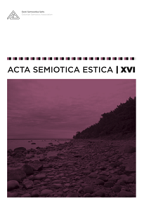Kuidas liblikatele valetada? Amazonase siniste Morpho liblikate püügimeetodite semiootiline analüüs
How to Lie to Butterflies? A Semiotic Analysis of the Catching Methods of Blue Morpho Butterfly in the Amazon Rainforest
Author(s): Keily TammaruSubject(s): Semiotics / Semiology, Environmental interactions, Sports Studies
Published by: Eesti Semiootika Selts
Keywords: umwelt; Morpho butterfly; lying; entomotourism; entomology;
Summary/Abstract: Blue morpho butterflies are one of the most popular targets among collectors in the Amazon rainforest. Understanding the umwelt of blue morpho butterflies enables one to be more successful in catching them. The objectives of the paper are to describe the umwelt of Morpho butterflies – their perception and interpretation about the tools that butterfly collectors use (hand-nets, bait traps with fermenting bananas, blue glossy tablets) – which allows us to explain how exactly the catching methods function, and to give recommendations how to further develop Morpho butterfly catching methods. Information about the behaviour of Morpho butterflies is collected by participatory observation and interviews with collectors in French Guiana in 2017– 2018. For analysis I use Jakob von Uexküll’s model of the functional cycle. The paper gives an overview about the perceptions of Morpho butterflies, the meanings of the objects in the butterflies’ umwelt and behaviour towards certain objects and signs that allow the butterflies to recognise these objects. Recognised objects can be categorised as food, congener, enemy or obstruction. Depending on the interpretation, the butterfly approaches (e.g., feeding, agonistic behaviour, partner searching) or avoids (e.g., escape from the predator or rival) the object. Attracting butterflies is a type of communication between the human and the insect. It is considered as lying, because the human has an intention to forward false information to the butterfly and s/he knows its behavioural response to the message. Describing details of this kind of communication between these two phylogenetically very distinct species allows for a deeper look into interspecific communication, the perception abilities and behaviour of the butterfly. The knowledge about the target’s umwelt can be relevant in catching any other species and it enables us to develop and understand the catching methods and to design the catching strategies. Additionally, it enables us to further understand Morpho butterfly perceptions, social behaviour and umwelt in general.
Journal: Acta Semiotica Estica
- Issue Year: 2019
- Issue No: 16
- Page Range: 26-52
- Page Count: 27
- Language: Estonian

